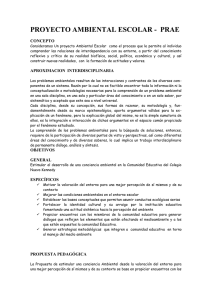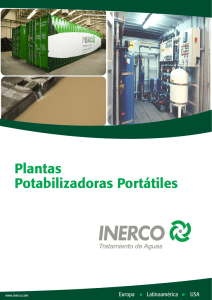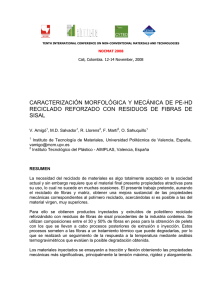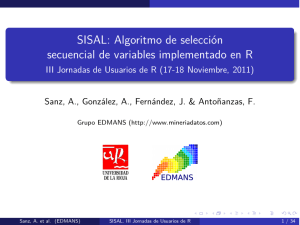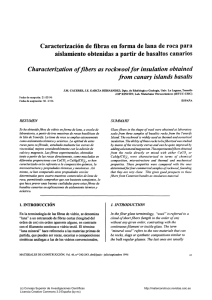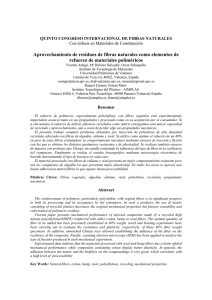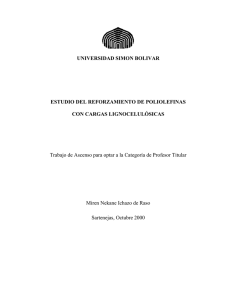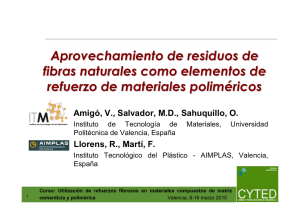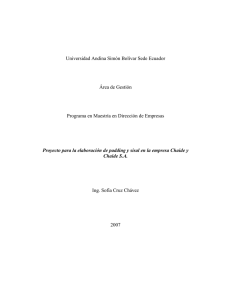RELACIÓN ESTRUCTURA, PROPIEDADES Y PROCESAMIENTO DEL MATERIAL COMPUESTO BIODEGRADABLE OBTENIDO A PARTIR DE POLICAPROLACTONA/ALMIDÓN Y FIBRA SISAL. RELATIONSHIP BETWEEN STRUCTURE, PROPERTIES AND PROCESABILITY OF BIODEGRADABLE COMPOSITE OBTENED BY POLYCAPROLACTONE/STARCH AND SISAL FIBER.
Anuncio
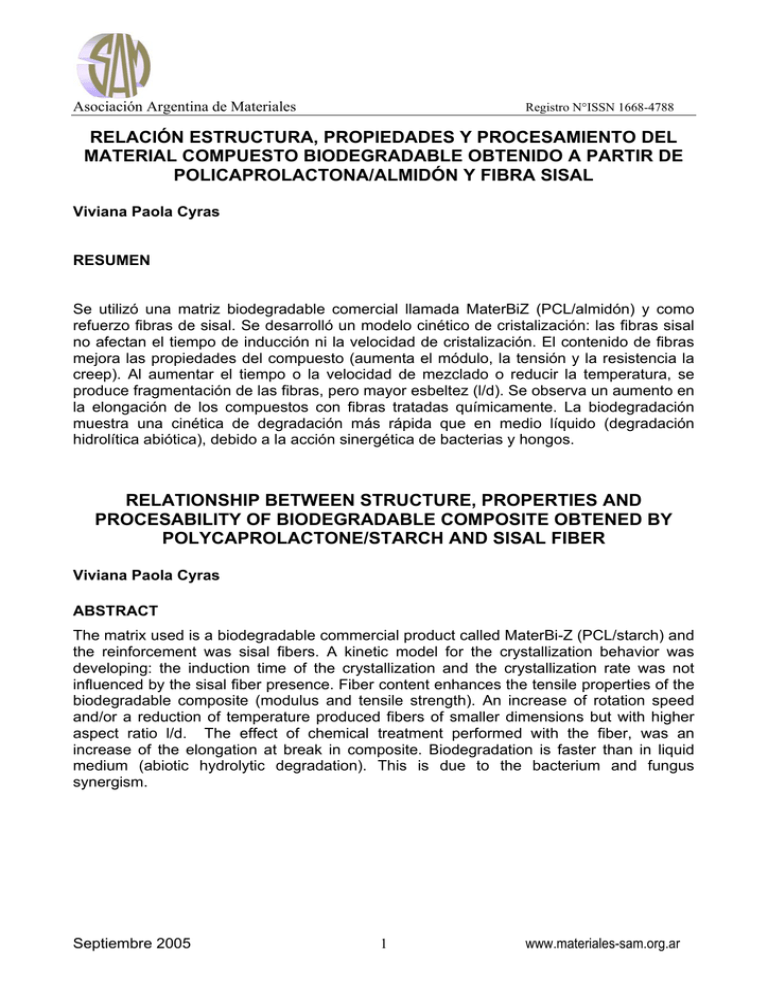
Asociación Argentina de Materiales Registro N°ISSN 1668-4788 RELACIÓN ESTRUCTURA, PROPIEDADES Y PROCESAMIENTO DEL MATERIAL COMPUESTO BIODEGRADABLE OBTENIDO A PARTIR DE POLICAPROLACTONA/ALMIDÓN Y FIBRA SISAL Viviana Paola Cyras RESUMEN Se utilizó una matriz biodegradable comercial llamada MaterBiZ (PCL/almidón) y como refuerzo fibras de sisal. Se desarrolló un modelo cinético de cristalización: las fibras sisal no afectan el tiempo de inducción ni la velocidad de cristalización. El contenido de fibras mejora las propiedades del compuesto (aumenta el módulo, la tensión y la resistencia la creep). Al aumentar el tiempo o la velocidad de mezclado o reducir la temperatura, se produce fragmentación de las fibras, pero mayor esbeltez (l/d). Se observa un aumento en la elongación de los compuestos con fibras tratadas químicamente. La biodegradación muestra una cinética de degradación más rápida que en medio líquido (degradación hidrolítica abiótica), debido a la acción sinergética de bacterias y hongos. RELATIONSHIP BETWEEN STRUCTURE, PROPERTIES AND PROCESABILITY OF BIODEGRADABLE COMPOSITE OBTENED BY POLYCAPROLACTONE/STARCH AND SISAL FIBER Viviana Paola Cyras ABSTRACT The matrix used is a biodegradable commercial product called MaterBi-Z (PCL/starch) and the reinforcement was sisal fibers. A kinetic model for the crystallization behavior was developing: the induction time of the crystallization and the crystallization rate was not influenced by the sisal fiber presence. Fiber content enhances the tensile properties of the biodegradable composite (modulus and tensile strength). An increase of rotation speed and/or a reduction of temperature produced fibers of smaller dimensions but with higher aspect ratio l/d. The effect of chemical treatment performed with the fiber, was an increase of the elongation at break in composite. Biodegradation is faster than in liquid medium (abiotic hydrolytic degradation). This is due to the bacterium and fungus synergism. Septiembre 2005 1 www.materiales-sam.org.ar
